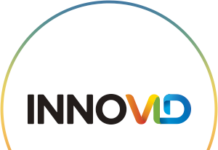Business leaders may think that using the latest clichés makes them appear professional, on top of their game, and in control. But, this column from public speaking coach and veteran public relations executive Rosemary Ravinal notes, the truth is that many bosses use jargon-filled language to conceal their weaknesses or fears. Yet, she says, no amount of colorful language can compensate for the lack of leadership and know-how.
By Rosemary Ravinal
Jargon and tired clichés undermine your credibility. You may think using trendy phrases and acronyms makes you sound more competent, but the opposite may be true. You could be breathing jargon monoxide without knowing and harming the effectiveness of your business communication.
Let me explain. Jargon monoxide is a term coined by Hayagreeva “Huggy” Rao and Robert I. Sutton, authors of The Friction Project: How Smart Leaders Make the Right Things Easier and the Wrong Things Harder. The authors point to research showing that jargon suffocates thought and conversations because it seeks to mystify ideas rather than simplify them. It dilutes the clarity of your messages and limits your ability to harness the power of words to create change.
Dr. Rao said in a podcast interview earlier this year that one way to check for simplicity is to ask if a 10-year-old would understand. “What we need in organizations is simple language…You could say, We want to foster superior customer service. What the hell does that mean? [Instead] you could tell your employees, Hey, when you do something, make sure you try and put a smile on a customer’s face.” Now, what’s easier to understand?”
Ask ChatGPT for the most common overused business jargon and you will get: synergy, leverage, paradigm shift, low-hanging fruit, circle back, bandwidth, move the needle, touch base, deep dive, onboarding, scalable, value-add, action items, core competency, thought leader, and win-win. Though these and dozens of other terms serve as shorthand for complex ideas, there’s a big downside to overusing them.
As you prepare your plans and forecasts for 2025, I challenge you to check the levels of jargon monoxide in your communication. Don’t misunderstand. Every workplace has its share of jargon, acronyms, and buzzwords. Some are specific to an industry, and some have been coined by management gurus, repeated incessantly, and cemented into our vocabulary. When they get in the way of clear, concise, and compelling communication, they can become toxic. Let’s “drill down” on this.
There are several things wrong with “circling back” to words and phrases that limit your progress “going forward.”
- Jargon monoxide may be understood within some silos but makes it difficult for others even within the same organization.
- Words like innovation, transformation, and mission-driven have been so hollowed out from overuse that they’ve lost their meaning.
- A rich and varied vocabulary conveys ideas with greater clarity and resonance and demonstrates your intelligence and competence. Jargon undercuts that.
Business leaders may think that using the latest clichés makes them appear professional, on top of their game, and in control. But, according to Rao and Sutton, the truth is that many bosses use jargon-filled language to conceal their weaknesses or fears. Yet, no amount of colorful language can compensate for the lack of leadership and know-how.
Take the term “redundancy.” In my corporate communications career, I wrote my share of press releases referring to downsizing and layoffs as measures to address “redundancy” in the company. I didn’t think twice about using the term redundancy professionally until it came up in my private life. After my last colonoscopy, my gastroenterologist told me I have a “redundant colon.” Concerned, I pressed for an explanation and learned that redundant in this context means longer than the average for a woman of my size and has no consequences for my health “going forward.”
What a relief.
Speaking of going forward. “Going forward” seems to be on everyone’s lips these days as we seek a purposeful path to a brighter future. Unfortunately, the term is ambiguous about specific actions, timelines, and accountability. For example, “We will become more productive going forward.” What does that mean? If it’s meant to be purely aspirational, try this: “We seek | aim | strive to be more productive.” Simple.
In 2025, set your intention to make the language you use demonstrate your intelligence, creativity, authenticity, and thoughtfulness. De-jargonize your speech and writing. Check your jargon monoxide at the door and “double click” on language that serves, inspires, and engages your audience.

Contact Rosemary Ravinal for details on public speaking training programs or one-on-one coaching services in any of the following areas, in both English and Spanish:
-
Public Speaking
-
Media Readiness
-
Presentation Skills




